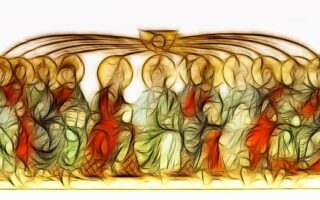Amish and Mennonite communities are known for their distinctive clothing styles, which reflect their religious beliefs and commitment to simplicity. While both groups share similar roots and values, there are notable differences in their clothing choices. This article will explore the key characteristics and variations in Amish and Mennonite clothing, shedding light on their unique traditions and practices.
Table of Contents
Traditional Amish Clothing: A Closer Look at the Distinctive Attire
Amish Vs Mennonite Clothing: Traditional Amish Clothing – A Closer Look at the Distinctive Attire
When it comes to traditional clothing, the Amish and Mennonite communities have a unique style that sets them apart from the rest of society. Their attire is not only a reflection of their religious beliefs but also a way to maintain their distinct cultural identity. In this article, we will take a closer look at the traditional clothing worn by the Amish community and explore the reasons behind their distinctive attire.
The Amish community is known for its simple and modest way of life, and their clothing is no exception. Traditional Amish clothing is characterized by its plainness, lack of adornments, and adherence to a specific color palette. Men typically wear dark-colored suits, consisting of a plain shirt, trousers, and a vest. They also wear suspenders and a wide-brimmed hat, which serves both as protection from the elements and as a symbol of their faith.
Women in the Amish community wear long dresses that cover their arms and legs, often in solid colors such as blue, green, or purple. The dresses are typically made from sturdy fabrics like cotton or wool and are fastened with buttons or hooks rather than zippers or Velcro. Women also wear a white prayer covering, known as a kapp, which is a symbol of their submission to God and their commitment to modesty.
The distinctive attire of the Amish community serves several purposes. Firstly, it is a way for them to separate themselves from the outside world and maintain their distinct cultural identity. By dressing differently, they are able to visually demonstrate their commitment to their faith and their rejection of modern society’s emphasis on materialism and vanity.
Secondly, the plainness and simplicity of their clothing reflect the Amish belief in humility and the importance of living a modest life. By eschewing flashy colors and elaborate designs, they are able to focus on what they believe truly matters – their relationship with God and their community.
Additionally, the practicality of Amish clothing cannot be overlooked. The sturdy fabrics and simple designs are well-suited for the physically demanding tasks that are a part of their daily lives. Whether it’s working in the fields, tending to livestock, or doing household chores, their clothing is designed to withstand the rigors of their lifestyle.
It is important to note that while the Amish community as a whole adheres to a specific dress code, there can be variations within different Amish sects and even among individual families. Some communities may have stricter guidelines regarding the length of skirts or the style of hats, while others may allow for more flexibility in clothing choices.
In contrast to the Amish, the Mennonite community has a more relaxed approach to clothing. While they also value simplicity and modesty, Mennonite attire tends to be less strict and more influenced by contemporary fashion trends. Mennonite women, for example, may wear dresses in a wider range of colors and patterns, and they may choose to wear a bonnet or a headscarf instead of a kapp.
In conclusion, the traditional clothing of the Amish community is a reflection of their religious beliefs, cultural identity, and commitment to a simple and modest way of life. Their distinctive attire sets them apart from the rest of society and serves as a visual representation of their faith. While the Amish adhere to a strict dress code, the Mennonite community has a more relaxed approach to clothing, allowing for more individual expression. Regardless of the differences, both communities value simplicity, modesty, and a commitment to their religious beliefs.
Mennonite Clothing: Understanding the Modern Interpretations and Variations

When it comes to Amish and Mennonite communities, one of the most noticeable differences is their clothing. While both groups adhere to a modest dress code, there are distinct variations in the way they interpret and implement these guidelines. In this article, we will focus on Mennonite clothing and explore the modern interpretations and variations within this community.
Mennonites, like the Amish, believe in dressing modestly as a reflection of their faith and commitment to simplicity. However, Mennonite clothing tends to be less strict and more flexible compared to the traditional Amish attire. This is because Mennonites have embraced modernity to a greater extent, allowing for more individual expression and adaptation to contemporary fashion trends.
One of the key aspects of Mennonite clothing is the emphasis on modesty. Both men and women are expected to cover their bodies in a way that does not draw attention to themselves. For women, this typically means wearing dresses or skirts that fall below the knee and covering their shoulders with sleeves or shawls. Men, on the other hand, are expected to wear long pants and shirts with sleeves.
While these guidelines may seem restrictive, Mennonites have found ways to incorporate modern fashion into their wardrobe choices. Many Mennonite women, for example, opt for dresses and skirts in a variety of colors and patterns, allowing them to express their personal style while still adhering to the principles of modesty. Similarly, men often choose shirts and pants in different colors and styles, as long as they maintain the overall modesty requirements.
Another interesting aspect of Mennonite clothing is the use of head coverings for women. While not all Mennonite women wear head coverings, it is still a common practice in many communities. The style and type of head covering can vary depending on the individual’s personal beliefs and the specific Mennonite group they belong to. Some women may choose to wear bonnets, while others prefer scarves or hats. This diversity reflects the flexibility within the Mennonite community when it comes to interpreting and implementing their dress code.
It is important to note that Mennonite clothing choices can also be influenced by cultural and regional factors. For example, Mennonite communities in North America may have different clothing styles compared to those in Europe or other parts of the world. This regional variation allows for a unique blend of traditional Mennonite attire and local fashion influences.
In recent years, there has been a growing trend among some Mennonite communities to adopt more modern clothing styles while still maintaining the principles of modesty. This shift is often seen in younger generations who are more open to embracing contemporary fashion trends. These individuals may choose to wear pants instead of skirts or dresses, while still adhering to the overall modesty guidelines.
In conclusion, Mennonite clothing is a reflection of the community’s commitment to modesty and simplicity. While there are guidelines to follow, Mennonites have found ways to incorporate modern fashion trends and personal expression into their wardrobe choices. The diversity within the Mennonite community allows for variations in clothing styles, influenced by regional and cultural factors. Ultimately, Mennonite clothing is a balance between tradition and adaptation, showcasing the community’s ability to embrace modernity while staying true to their faith.
Cultural Significance of Amish and Mennonite Clothing: Exploring the Symbolism
Amish and Mennonite communities are known for their distinctive clothing styles, which have deep cultural and religious significance. While both groups share similar roots and beliefs, there are subtle differences in their attire that reflect their unique traditions and values. In this article, we will explore the symbolism behind Amish and Mennonite clothing, shedding light on the cultural significance of these garments.
One of the most noticeable aspects of Amish and Mennonite clothing is its simplicity. Both groups prioritize modesty and humility, and their attire reflects these values. Amish clothing, in particular, is characterized by its plainness and lack of adornment. Men typically wear dark-colored suits with suspenders, while women don modest dresses with long sleeves and high necklines. The absence of buttons and zippers is a deliberate choice, symbolizing a rejection of vanity and worldly distractions.
Mennonite clothing, on the other hand, allows for a bit more variety and personal expression. While still modest, Mennonite attire may include patterns and colors, reflecting the diversity within the community. Women often wear dresses with floral prints or pastel shades, while men opt for button-down shirts and trousers. This subtle difference in style reflects the more flexible approach to clothing within the Mennonite community, while still adhering to the principles of modesty and simplicity.
Beyond modesty, Amish and Mennonite clothing also serves as a visual representation of their commitment to community and separation from the outside world. The distinctiveness of their attire sets them apart from mainstream society, acting as a reminder of their unique identity and values. By dressing differently, they create a visible boundary between themselves and the secular world, reinforcing their commitment to their faith and community.
Another important aspect of Amish and Mennonite clothing is its practicality. Both groups prioritize functionality and durability, as their lifestyles often involve physical labor and manual work. Amish clothing, in particular, is designed to withstand the demands of farming and other labor-intensive activities. The use of sturdy fabrics and simple designs ensures that their garments can withstand the rigors of daily life, reflecting their commitment to hard work and self-sufficiency.
In addition to its practicality, Amish and Mennonite clothing also reflects their commitment to sustainability and simplicity. Both groups emphasize the importance of living in harmony with nature and minimizing waste. As a result, their clothing is often handmade and passed down through generations, with repairs and alterations made as needed. This approach to clothing not only reduces waste but also fosters a sense of connection to their heritage and ancestors.
In conclusion, the clothing worn by Amish and Mennonite communities holds deep cultural and religious significance. From its simplicity and modesty to its practicality and sustainability, every aspect of their attire reflects their values and beliefs. Whether it’s the plainness of Amish clothing or the slightly more varied styles of Mennonite attire, these garments serve as a visual representation of their commitment to their faith, community, and way of life. By understanding the symbolism behind Amish and Mennonite clothing, we can gain a deeper appreciation for the rich cultural heritage of these communities.
Fashion Evolution: Contrasting Amish and Mennonite Clothing Trends Over Time
Amish and Mennonite communities are known for their simple and modest way of life, which is reflected in their clothing choices. While both groups share similar beliefs and values, there are distinct differences in their fashion choices that have evolved over time.
Traditionally, Amish clothing has been characterized by its simplicity and lack of adornment. Amish women typically wear long, solid-colored dresses with a high neckline and long sleeves. These dresses are often made from plain fabrics such as cotton or linen and are fastened with buttons or hooks and eyes. The dresses are usually paired with a white apron and a prayer cap or bonnet, which covers the hair and is tied under the chin. Amish men, on the other hand, wear plain trousers, suspenders, and a button-up shirt, often in solid colors. They also wear a wide-brimmed hat and sometimes a beard, as a symbol of their faith.
Mennonite clothing, on the other hand, has seen more variation and adaptation to modern fashion trends. Mennonite women still adhere to the principles of modesty, but their dresses have become more colorful and stylish over time. They often wear floral prints or patterns, and their dresses may have more decorative elements such as ruffles or lace. Mennonite men also wear trousers and button-up shirts, but their clothing tends to be more relaxed and less formal than that of the Amish. They may opt for plaid or checkered patterns and wear more modern accessories such as belts or ties.
The evolution of Mennonite clothing can be attributed to several factors. One is the influence of the wider society and the desire to blend in while still maintaining their religious beliefs. As Mennonite communities have become more integrated into mainstream society, there has been a gradual shift towards more fashionable and contemporary clothing choices. This has allowed Mennonites to express their individuality while still adhering to their values of modesty and simplicity.
Another factor that has influenced the evolution of Mennonite clothing is the changing role of women within the community. In the past, women were primarily responsible for domestic tasks and were expected to dress in a way that reflected their role as homemakers. However, as women have taken on more diverse roles within Mennonite communities, their clothing choices have also evolved. They now have more freedom to express their personal style and preferences, while still adhering to the principles of modesty and simplicity.
Despite these differences, both Amish and Mennonite communities place a strong emphasis on modesty and humility in their clothing choices. They believe that clothing should not draw attention to oneself or promote vanity. Instead, their clothing is seen as a reflection of their faith and commitment to a simple way of life.
In conclusion, the fashion choices of Amish and Mennonite communities have evolved over time, reflecting changes in society and the desire to balance tradition with modernity. While Amish clothing remains simple and plain, Mennonite clothing has become more colorful and stylish while still adhering to principles of modesty. Both groups continue to prioritize humility and modesty in their clothing choices, using fashion as a way to express their faith and values.
Conclusion
In conclusion, Amish and Mennonite clothing differ in various aspects. Amish clothing tends to be more conservative and traditional, with women wearing plain dresses and men wearing plain shirts and pants. Mennonite clothing, on the other hand, can vary depending on the specific group or individual, but generally allows for more modern styles and colors. Both groups prioritize modesty and simplicity in their attire, but the specific guidelines and practices may differ.



